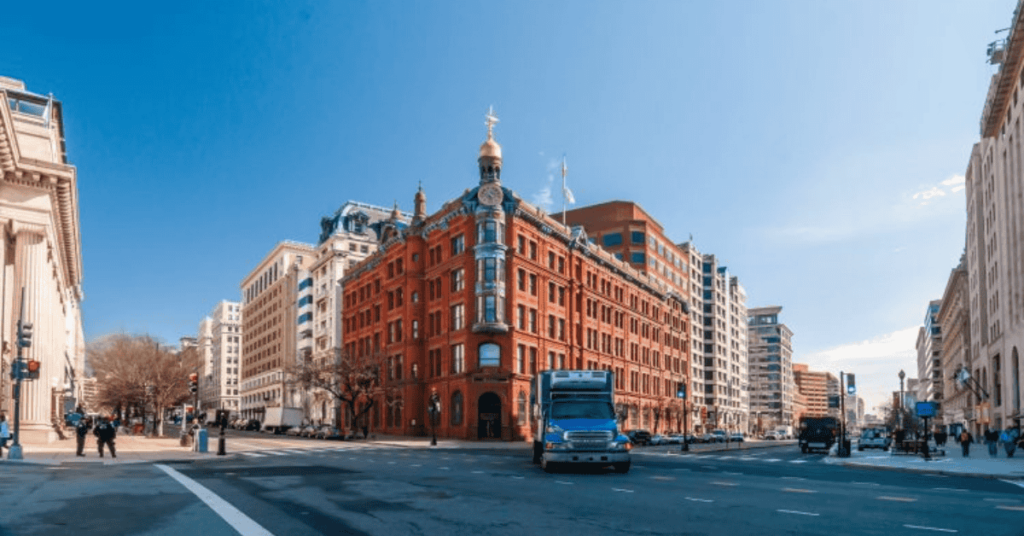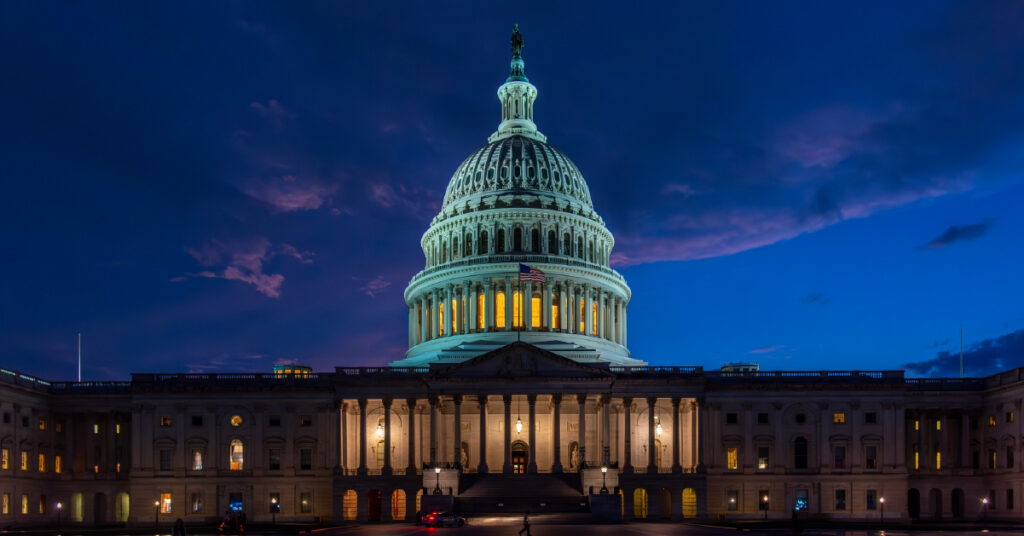Localities across the country are feeling the effects of major changes in economic conditions, the end of pandemic-era federal aid, and a chaotic and disorganized attempt to shrink the federal government. As some localities reduce their budgets and tax ambitions, others offer a path forward to a more progressive tax system better designed to deal with economic downturns. Local governments across the country should use this time to protect the most vulnerable citizens and enshrine fairer, more robust tax structures for the benefit of all residents.
Federal Chaos
Cuts from the so-called Department of Government Efficiency (DOGE) and threats from the federal tax and spending bill stand to harm local governments and the programs that help people who need it the most. State leaders are skeptical of the amount of damage they can mitigate, meaning localities cannot rely on state aid to fill in gaps.
Deep federal cuts could cause wide-ranging pain for local governments, including:
- The tracking of major weather events and helping individuals and governments recover after tornadoes, hurricanes, wildfires, and floods could be harmed by cuts to the Federal Emergency Management Agency (FEMA) and the National Oceanic and Atmospheric Administration (NOAA)
- Cuts to the National Park Service and National Forest Service decimate local labor markets unless the local governments hire those workers
- Libraries, many of which rely on federal grants to supplement local revenues, could face cuts to service
- Local policing may be forced to cut back, with threats to funding for so-called “sanctuary jurisdictions” which targeted jurisdictions across the political spectrum including sanctuaries for immigrants and the Second Amendment
- Major federal grant programs are being cut, and the administration is placing careless restrictions on the few grants that federal agencies are posting
Washington, D.C. offers a preview of what could come to cities across the country. The region has already entered a minor recession as thousands of federal employees and contractors have been laid off or otherwise removed from their positions. Between February and May, unemployment claims in the District went up 167 percent. The city is also waiting for Congress to unfreeze over $1 billion in their own tax revenues, which House Speaker Mike Johnson has withheld from being heard on the House floor. The Mayor’s office has responded to this by unwisely proposing business tax cuts and cuts to the Child Tax Credit.
In addition to DOGE’s mess, the federal tax and spending bill making its way through Congress is not only a massive regressive federal tax cut, but will cost local governments money, primarily through cuts to Medicaid. Because Medicaid is paid for by states and the federal government, any cut to federal spending means more state spending or fewer services. Hospitals who treat patients on Medicaid are overwhelmingly treating low-income patients in rural areas, and this would put further pressure on public health care. In addition, public hospital systems, like those in New York and Chicago, would lose essential funding, leading to loss of services as there is no amount of local tax revenue that could make up for the lost revenue.
The President’s budget request also includes a 43 percent cut to housing assistance programs by reorganizing five distinct programs into much smaller block grants to states. States would then have the responsibility of spending those funds, and, just like Medicaid, would have to make up for a massive cut to maintain programs as they currently exist. Without new state revenues, this will push low-income families out of their homes and harm communities across the country.
Congress is also still debating the state and local tax (SALT) deduction. The federal government has long allowed taxpayers to deduct the state and local taxes they pay – primarily state income tax and local property tax – from their federal tax bill. The 2017 tax bill limited that deduction to a maximum of $10,000. Legislators continue to debate how large the SALT cap should be, with variations in deduction amount and phaseout limit.
In addition, an early draft of the bill also included the elimination of the municipal bond tax exemption. The tax exemption allows states and localities to sell bonds at lower cost, which in turn lowers the overall costs to taxpayers. While the federal tax exemption directly benefits higher-income households who hold the bonds, the savings to local governments indirectly helps taxpayers across incomes. While that provision was scratched from the version that passed the House, the uncertainty has rocked the municipal bond industry, leading to an increase in municipal bond offerings in early 2025, leading to more competition and higher long-term costs for municipalities.
Transit Funding Risks
Mass transit authorities are also at risk. Rising costs of maintenance and staff have combined with low ridership across the country. Funding issues in Boston, Chicago, the Bay Area, Washington, D.C., and across Pennsylvania have led to the possibility of drastic service cuts and fare increases. In late June, the transit agency for Philadelphia voted for a budget that cut service by 45 percent and increased fares. Transit funding has also become an issue in the Mobile, Alabama mayoral race. Transit has long been funded by regressive sales taxes in addition to fares and state and federal aid. Solutions to these long-term issues should ensure long-term sustainability of funding and service rather than short-term fixes.
However, there is a bright spot in New York. Two major changes are ensuring long-term sustainability transit in and around New York City. The state recently adjusted tax rates on the Mobility Payroll Tax, which is a payroll tax paid by employers in New York City and seven surrounding counties. Small businesses will pay a lower rate than large businesses, and the tax change is estimated to produce $1.4 billion annually to support transit.
The Metropolitan Transit Agency (MTA, which operates transit in and around New York City) also implemented congestion pricing for downtown Manhattan. Though it was supposed to go into effect last summer, the implementation was delayed until January 2025 with lower tolls. The program has been an overwhelming success, generating $159 million in the first three months of 2025, along with more people riding transit, fewer traffic delays for those in cars, trucks, and buses, lower pollution levels, and fewer noise complaints from residents and businesses. MTA is ensnared in litigation with the Trump Administration over congestion pricing, though federal courts have so far sided with the authority.
Property Taxes Under Threat
Rising home prices are causing strife for some taxpayers, and state legislatures are attempting to cut property taxes. In many cases, these cuts come with loud objections from local leaders, who see across-the-board cuts as an easy political solution that costs the state nothing yet costs localities quite a bit.
Nine states – Idaho, Indiana, Kansas, Missouri, Montana, North Dakota, South Dakota, Texas, and Wyoming – already cut property taxes this year. Indiana also included limitations on local income taxes, and both cuts mean counties are cutting projects already underway. Local schools in Indiana and Ohio are worried about maintaining current staffing. In Missouri, legislators tied property tax cuts to the effort to keep major sports teams in Kansas City – a move designed to subsidize billionaires. Proposals for property tax circuit breakers in other states including Illinois, Montana, and Ohio have failed or been delayed, despite evidence they are best at reducing regressivity in local property tax systems.
In addition, several states are flirting with the idea of abolishing property taxes altogether. This is a short-sighted idea that will destroy local autonomy and enrich wealthy landowners with little benefit to the community services we all rely on. Anti-property tax activists are attacking the tax in Florida, Ohio, and Wyoming. Last year, voters in North Dakota were smart to keep property taxes and maintain local control over local finances, and voters in other states should not be tricked into voting against their own best interest.
One state is forging a different path. Montana is creating a new class of properties for second homes. Montana has long used split roll property taxation, and this new change ensures that the influx of wealthy part-time residents and people operating vacation rentals pay a higher portion of property taxes than the full-time residents who own or rent one home. This will shift the balance of property taxes away from permanent residents.
Other Local Tax Quick Hits
- Seattle residents passed a referendum to increase the city’s high-earner payroll tax to support the city’s public housing developer.
- Philadelphia will cut business taxes, halving the business income tax and eliminating the gross receipts tax over the next 15 years. Our local director Kamolika Das opposed the cuts in the Philadelphia Inquirer.
- Vermont is reorganizing its school finance regime and is planning to consolidate school districts across the state. If districts are approved by the legislature, the state may also implement a second homes tax, equalize per-pupil spending across districts, and move to a more frequent property reassessment schedule.
- Santa Cruz implemented a soda tax in direct violation of California state law; the city is trying to induce a lawsuit.
- The Missouri Supreme Court will issue a decision on “stacking” cannabis taxes. The constitutional amendment allowing for the sale of cannabis products was unclear if counties and cities could stack excise taxes.
- Colorado and Montana allowed destination localities to increase taxes on visitors to help pay for workforce housing.
- Maryland increased the maximum county income tax rate to 3.3 percent.
- Boston created a blue-ribbon commission to study the revenue effects of downtown office building vacancies, which has already hit homeowners’ property tax bills hard.





